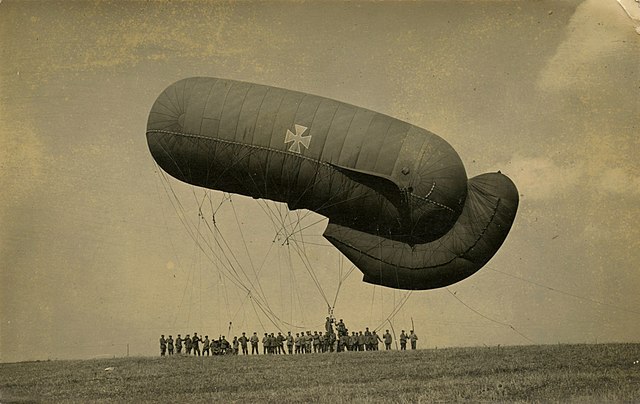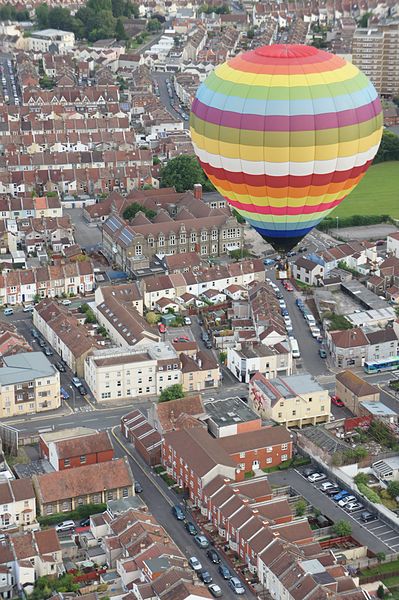An observation balloon is a type of balloon that is employed as an aerial platform for gathering intelligence and spotting artillery. The use of observation balloons began during the French Revolutionary Wars, reaching their zenith during World War I, and they continue in limited use today. Synonyms include espionage balloon, reconnaissance balloon, spy balloon, and surveillance balloon.
British observation balloon from 1908, typical of pre-WWI observation balloons
The battle of Fleurus, 26 June 1794, saw the first military use of an aircraft (L'Entreprenant).
German Parseval-Siegsfeld type balloon at Équancourt (September 1916). The rear "tail" fills with air automatically through an opening facing the wind.
Caquot type kite balloon, used by the Allies in the mid-latter part of WWI
In aeronautics, a balloon is an unpowered aerostat, which remains aloft or floats due to its buoyancy. A balloon may be free, moving with the wind, or tethered to a fixed point. It is distinct from an airship, which is a powered aerostat that can propel itself through the air in a controlled manner.
A hot air balloon in flight
In 1999, Bertrand Piccard and Brian Jones achieved the first non-stop balloon circumnavigation in Breitling Orbiter 3.
"Aerostation out at Elbows, or The Itinerant Aeronaut" print illustration and poem (1785)
Hot air balloons, San Diego








